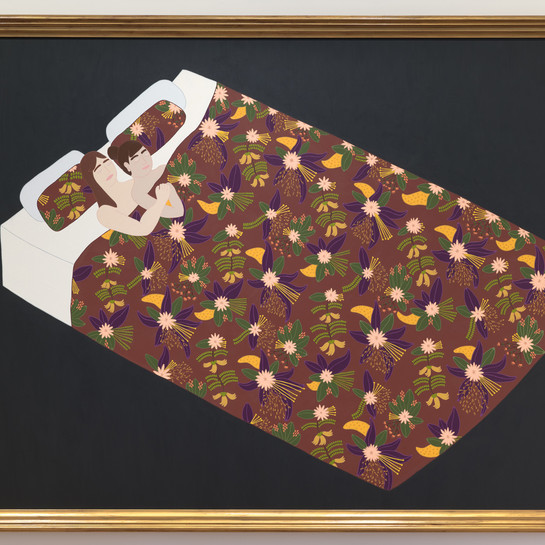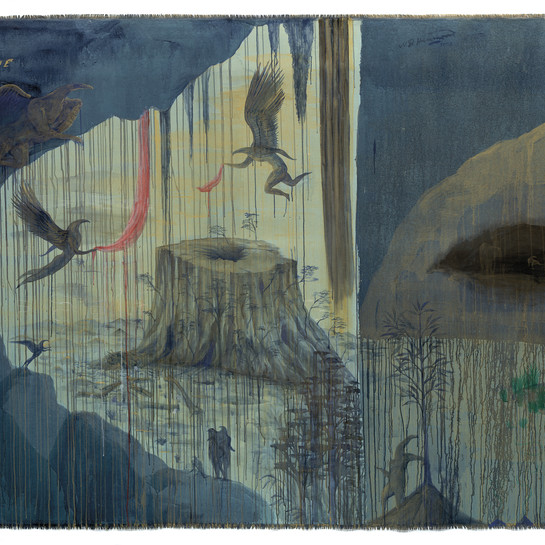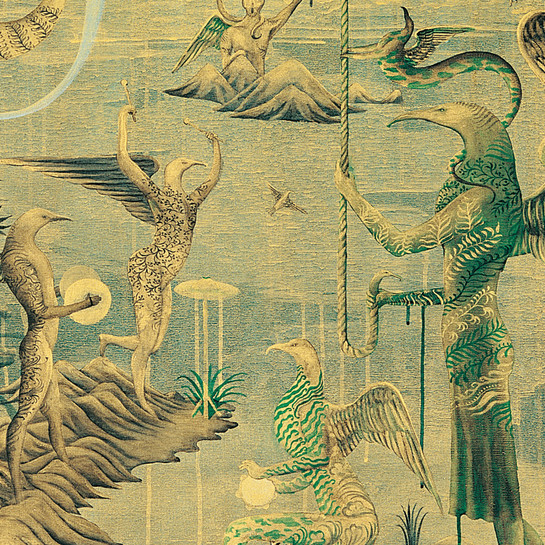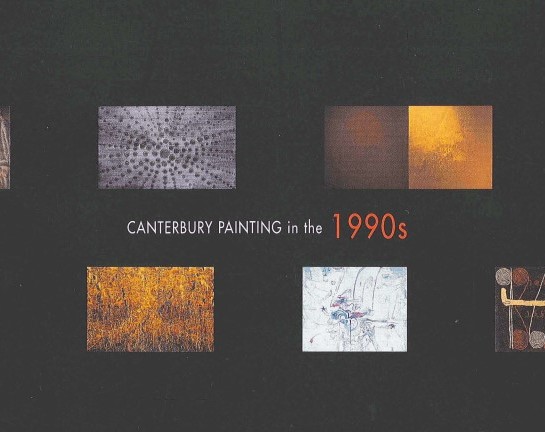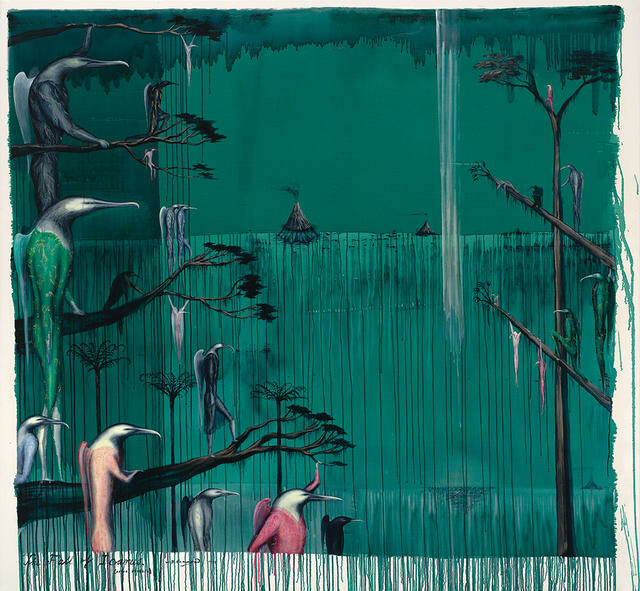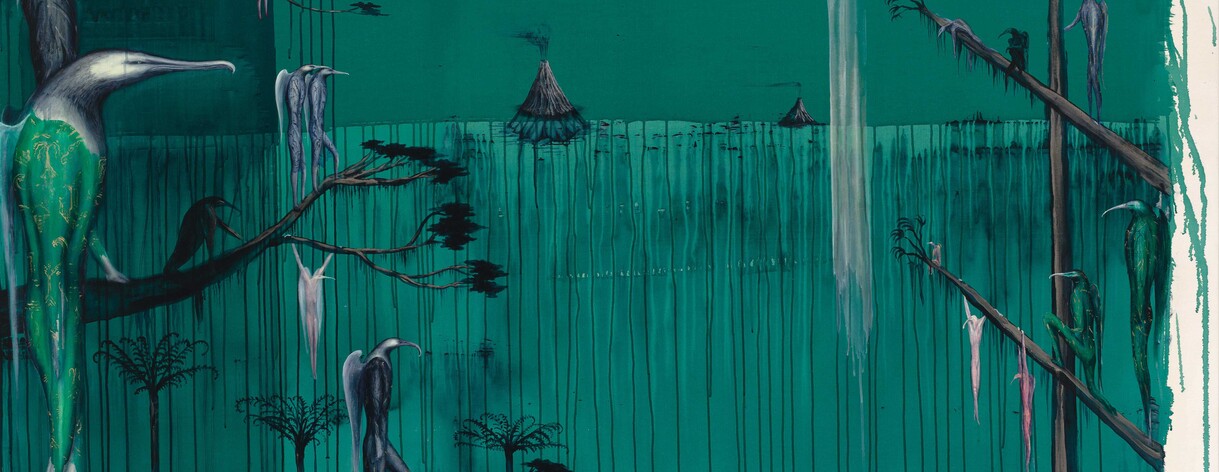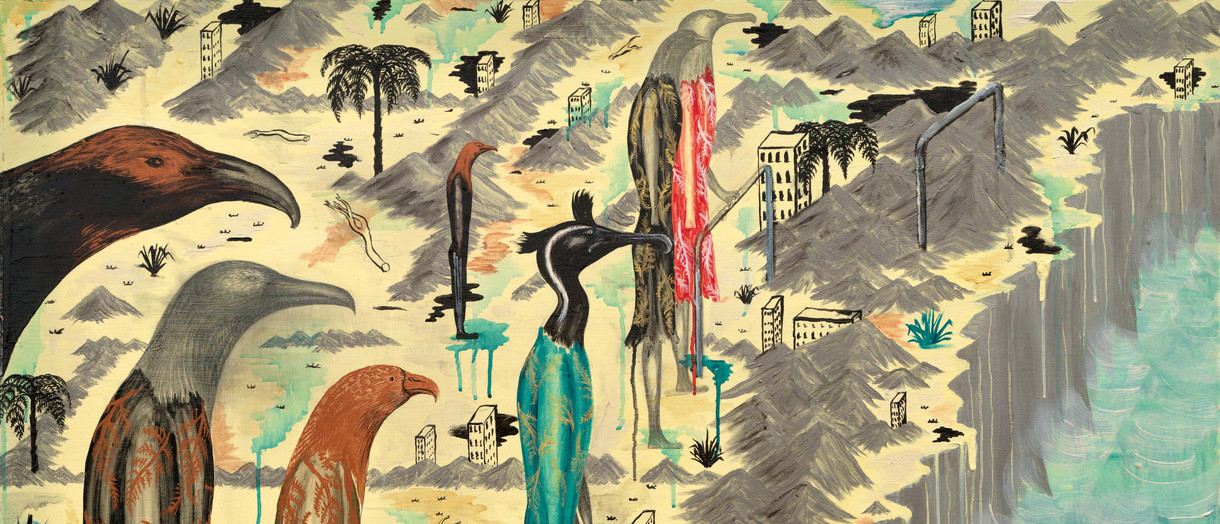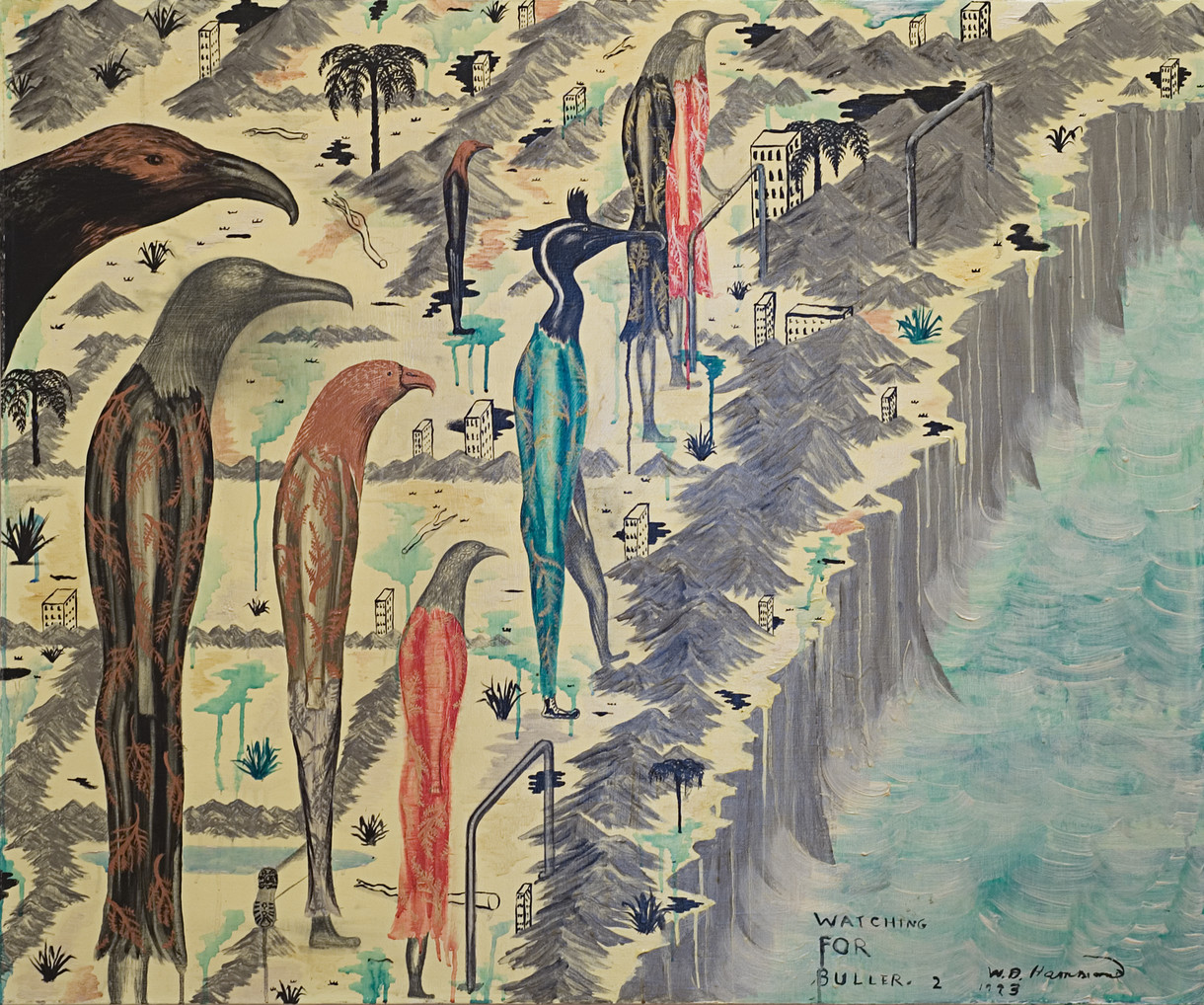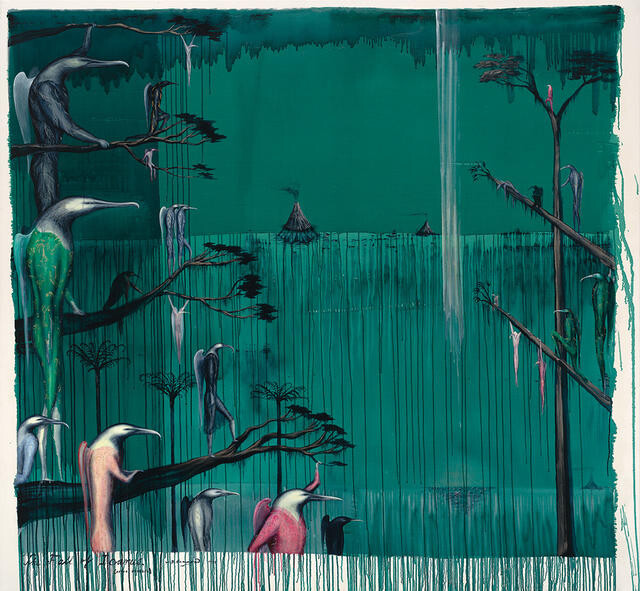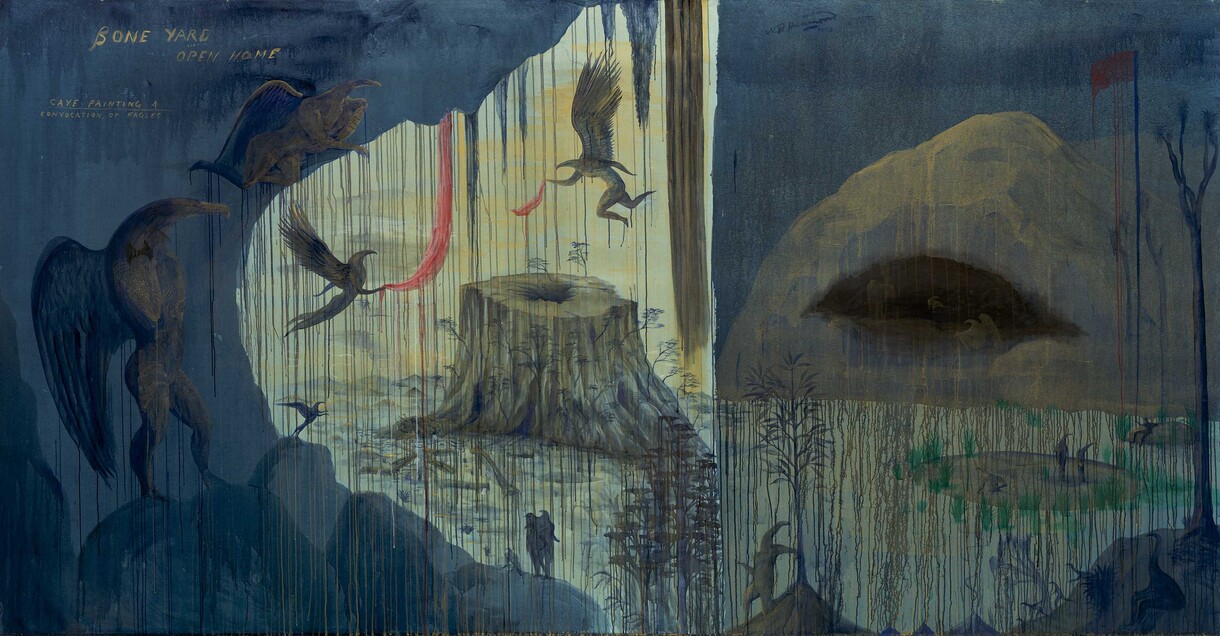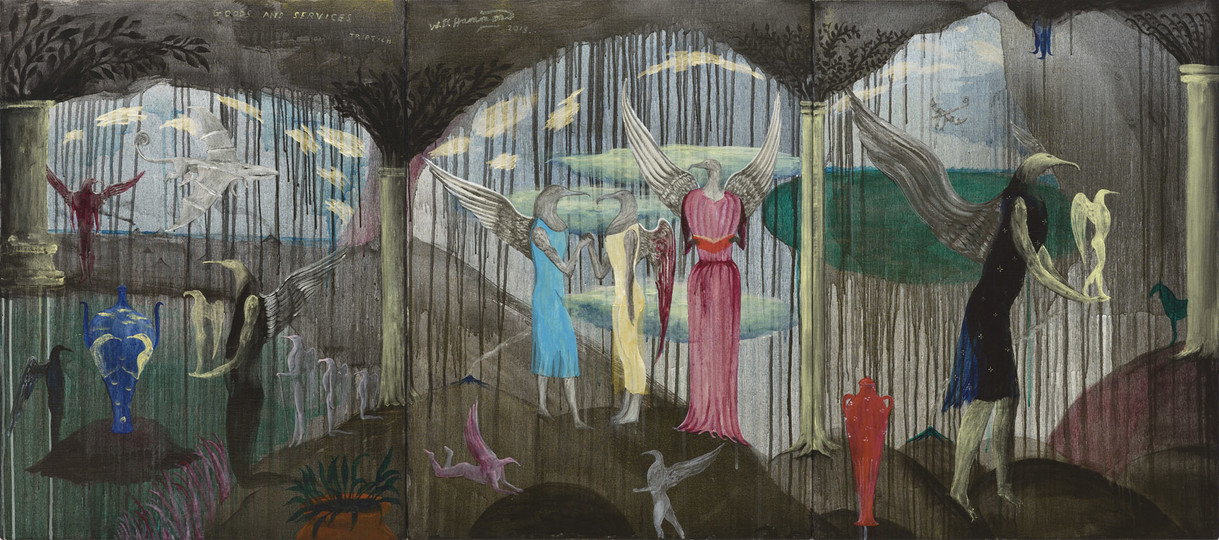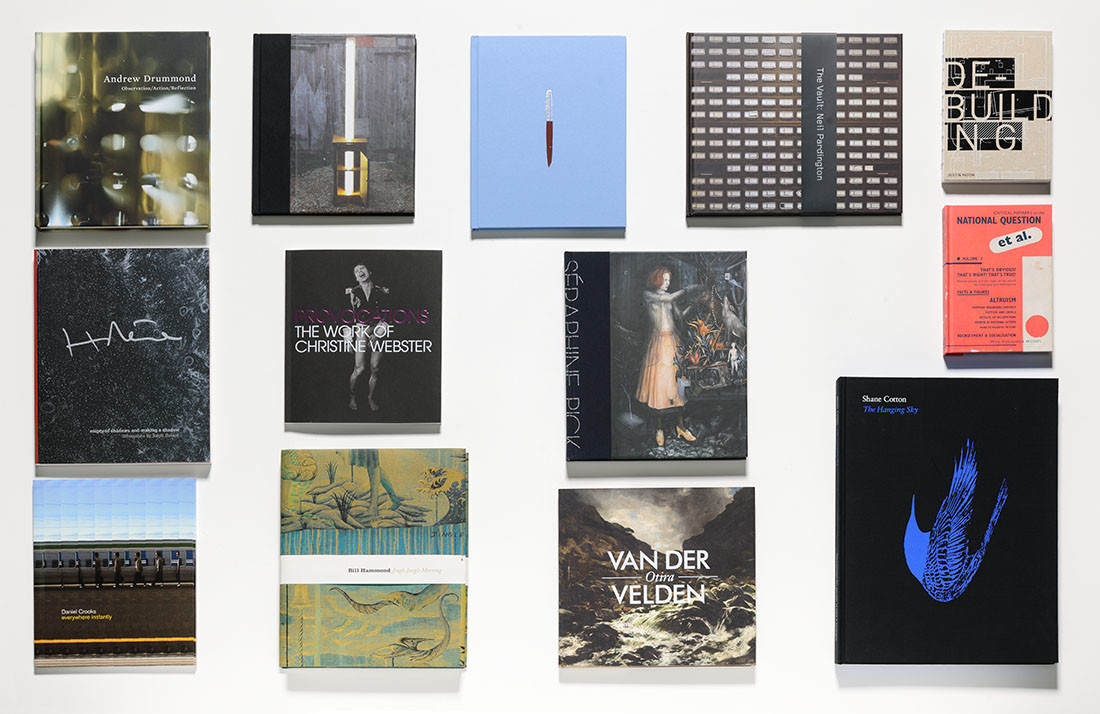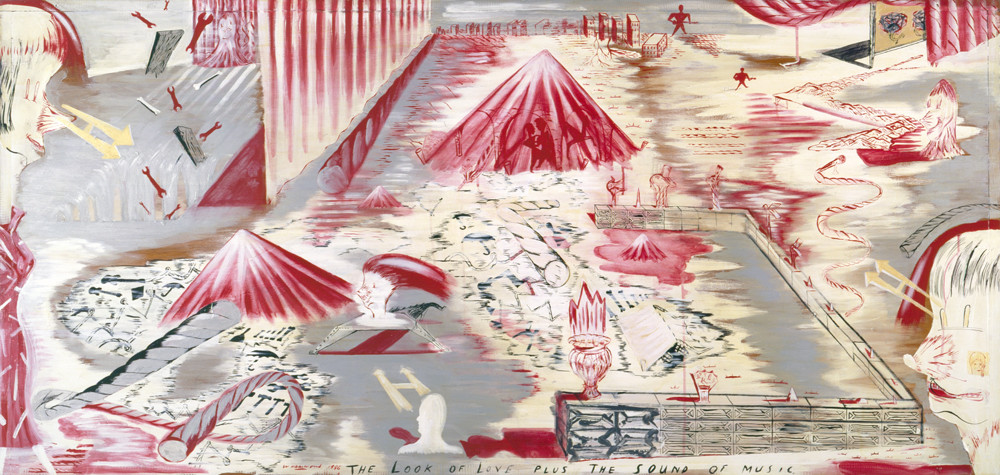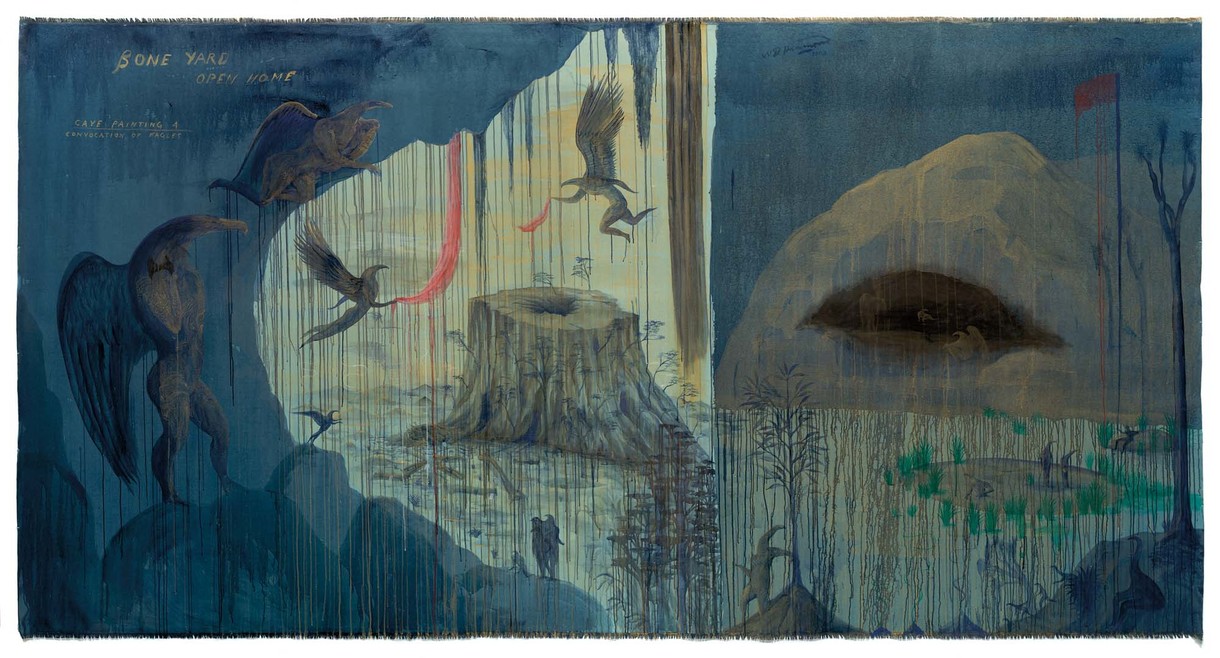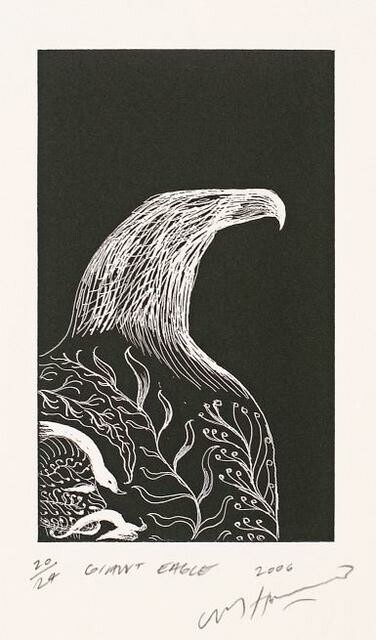Bill Hammond
Aotearoa New Zealand, b.1947, d.2021
The Fall of Icarus (after Bruegel)
- 1995
- Acrylic on canvas
- Purchased 1996
- 2005 x 2165 x 36mm
- 96/19
Tags: animals, birds (animals), green (color), landscapes (representations), mountains, natural landscapes, people (agents), trees, volcanoes
“It’s bird land. You feel like a time-traveller, as if you have just stumbled upon it – primeval forests, rātās like Walt Disney would make. It’s a beautiful place, but it’s also full of ghosts, shipwrecks, death…” —Bill Hammond Bill Hammond sailed to the remote Auckland Islands, south of Aotearoa New Zealand towards Antarctica, in 1989. Its landscape made a profound impression on him. Lined up on cliffs, staring out at the ocean, the birds of the Auckland Islands were unafraid of people, and Hammond imagined that Aotearoa looked very similar before human habitation. Different stories and timeframes and images collide in his canvasses as if in a dream, or as if fragments of consciousness were projected on to a screen. “I don’t have a tight brief”, he says. “I fumble around history, picking up bits and pieces.”
(Te Wheke, 2020)
Exhibition History
Bill Hammond: Playing the Drums, 3 August 2019 – 19 January 2020
Bill’s take on Bruegel’s sixteenth-century masterpiece Landscape with the Fall of Icarus is populated with serious, enigmatic bird creatures watching from their treetop perches as one of their own takes wing and fails to fly, crashing centre stage. These birds have been a motif for Bill since the early 1990s, representing the colonised and colonisers of Aotearoa New Zealand. Here, they occupy a primordial time before human habitation. Bill had nineteenth-century bird stuffers like Walter Buller in mind when he painted these birds. Some hold on to branches, needing that reassuring grasp lest they fall off their perch, while others are ghostlike, stretched out in crucifix poses, as if they, too, are about to fall into the abyss of extinction.
In Greek mythology, Icarus flew too close to the sun, melting the wax that bound his wings and causing him to plunge into the sea. Bill Hammond uses this legend to suggest the threat posed to the natural environment by humans. Hammond’s birds look on dispassionately, their own wings emphasising the absurdity of Icarus’s fatal desire. The Fall of Icarus takes a work by Dutch artist Pieter Bruegel the Elder (c.1558) as a pivotal reference. The same compositional format – elevated viewpoint, figures in the foreground and the tiny body of the fallen Icarus disappearing into the sea – are seen in the original painting. Hammond was born in Christchurch and studied at the University of Canterbury School of Fine Arts between 1966 and 1968. In 1989 he joined a number of other New Zealand artists on an expedition to Antarctica and the Auckland Islands.’Bill Hammond: Jingle Jangle Morning’ (2007) is the most recent survey of Hammond’s work to date, organised by Christchurch Art Gallery Te Puna o Waiwhetū. (Label from 2007)
In a green, almost primordial, world of dripping forests and smouldering volcanoes, bird-like creatures stand as sentinels, looking out to sea. Sleek and enigmatic, wearing lustrous fabrics rather than feathers, they suggest New Zealand's early history as a land occupied almost solely by birds, before the arrival of humans. The threat posed to the natural environment through use by humans is suggested by Hammond using the Greek legend of Icarus, who flew too close to the sun, melting his wax and feather wings and plunging to his death in the sea. Hammond has developed this work from a 1558 painting by the Dutch artist Pieter Brueghel (active 1551-1569).
Hammond was born in Christchurch and studied at the University of Canterbury. For a period after leaving art school he designed and manufactured wooden toys. He held his first solo exhibition in 1979 and has since exhibited regularly. Hammond has won a number of awards and fellowships and is represented in private and public collections throughout New Zealand. (Label from 2005)
In 1989 Bill Hammond joined a number of other New Zealand artists on an expedition to Antarctica and the Auckland Islands. The following year in response to this trip he completed a series of works which illustrated his reawakened interest in the land, in New Zealand bird life and in the nineteenth century ornithologist Sir Walter Buller. His lavishly illustrated volumes on New Zealand birds document many species that have not survived into the twentieth century and others that may not survive into the next. This threat to New Zealand wildlife is the theme explored in The Fall of Icarus.
Icarus, the young man in Greek mythology who flew too close to the sun with this feather and wax wings, is seen plunging headfirst into the earth watched by the still and silent birds. The world is a primitive zone, an eery green space where volcanic cones errupt onto a barren land and into a lifeless sea. A strange green 'rain' falls into the scene as the stronger birds, painted in uneasy anthropomorphic forms, watch silently. Those which have already been defeated by the destruction of the environment hang as lifeless skins.
Bill Hammond was born in Christchurch and is a graduate of the University of Canterbury School of Fine Arts. He had his first solo exhibition in 1981 and has been exhibiting nationally since that time. (lLabel from before 2003)
